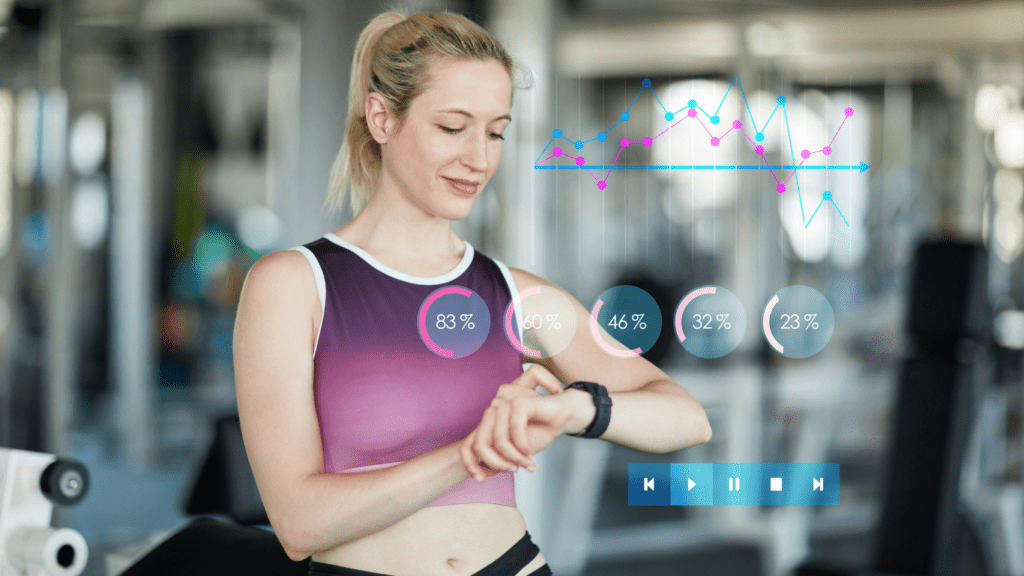Tracking an athlete’s progress isn’t just about measuring performance—it’s about uncovering potential and refining strategies. Whether you’re a coach, athlete, or sports enthusiast, understanding development is key to achieving long-term success. Without the right tools and techniques, it’s easy to lose sight of what truly drives improvement.
Importance Of Monitoring Athlete Development
Tracking athlete development provides valuable insights into strengths, weaknesses, and areas for improvement. Consistent monitoring helps establish clear benchmarks, ensuring training programs align with individual goals. By evaluating performance trends, I can adjust strategies to optimize outcomes.
Focusing on physiological data, such as heart rate, strength metrics, and endurance levels, allows precise measurement of physical progress. For instance, wearable devices track these metrics in real-time, offering reliable data for decision-making. This information highlights patterns that might not be visible through observation alone.
Skill assessments play a crucial role in understanding technical growth. Examining execution quality in sports-specific tasks, like ball control or sprint technique, shows how practice translates into performance improvements. Through these evaluations, I ensure athletes stay on course toward skill mastery.
Monitoring development also enhances injury prevention. Analyzing biomechanical movements or fatigue indicators uncovers risks before they escalate into injuries. Maintaining athlete health protects overall progress and reduces setbacks.
Athlete development isn’t only physical; tracking psychological factors like motivation, focus, and stress resilience adds depth to the evaluation process. Using questionnaires or performance pressure tests ensures mental preparedness aligns with physical capabilities.
Key Tools For Tracking Progress
Tracking athlete development requires leveraging advanced tools designed to measure and analyze various performance facets. Below are essential tools that provide actionable insights.
Wearable Devices And Performance Trackers
Wearable devices deliver real-time physiological data that facilitates precise tracking of an athlete’s physical metrics. Tools like heart rate monitors, GPS trackers, and smartwatches record metrics such as heart rate, distance covered, sleep patterns, and caloric expenditure. Devices like WHOOP bands or Polar heart rate monitors also help monitor recovery times and exertion levels, ensuring optimized training loads. This continuous data collection enables early identification of fatigue or overtraining risks.
Mobile Apps And Software Solutions
Mobile apps offer efficient platforms for logging workouts and monitoring progress. Applications like MyFitnessPal and Strava allow athletes to track nutrition, endurance, and strength performance. Strength-training apps such as Strong offer progress tracking through customizable workout plans, while Hudl provides video analysis tools to enhance technical performance. These apps enable quick feedback and seamless integration with other tools, improving an athlete’s development methodologies.
Data Analytics Platforms
Data analytics platforms convert raw data into meaningful insights. Solutions like Kitman Labs and CoachMe+ aggregate, visualize, and analyze performance and health data from multiple sources, helping refine training strategies. These platforms assist coaches in identifying trends, correlating variables like workload and injury risk or progress rate, and aligning these insights with athlete goals. Using platforms with predictive analytics equips athletes with a structured performance roadmap.
Effective Techniques For Athlete Monitoring

Tracking athlete development involves combining quantifiable data with qualitative assessments. I focus on identifying performance trends and ensuring training aligns with individual objectives.
Performance Benchmarks And Goals
Setting benchmarks offers a clear metric to evaluate progress over time. I use measurable goals, such as:
- sprint times
- strength capacities
- endurance test results
to establish starting points and monitor improvements. Aligning these benchmarks with long-term objectives ensures training remains targeted. Regular testing intervals make it easier to adjust strategies and address areas needing improvement.
Video Analysis For Skill Evaluation
Video analysis allows an in-depth review of an athlete’s technical abilities. I capture performance footage during training and competition to evaluate movement efficiency, technique consistency, and biomechanics. Slow-motion features help identify subtle errors, like improper postures or off-timed actions. Reviewing this footage with athletes enhances understanding, facilitates corrections, and measures improvements in specific skills, such as footwork or throwing mechanics.
Athlete Self-Assessments
Incorporating self-assessments promotes accountability and mental awareness. I rely on standardized questionnaires to evaluate perceived exertion, fatigue levels, and mental focus. These insights, matched with objective performance data, highlight discrepancies between how athletes feel and their physical capabilities. Encouraging athletes to record their reflections fosters a more holistic approach to monitoring development.
Benefits Of Regular Monitoring
Regular monitoring delivers measurable advantages that enhance athlete development across multiple dimensions.
- Informed Decision-Making: Access to real-time data helps refine training plans. For instance, analyzing heart rate variability and recovery speeds lets me adapt exercise intensity based on an athlete’s current condition.
- Personalized Training: Monitoring individual metrics, like VO2 max or sprint times, identifies specific needs. This ensures tailored strategies that align with unique athlete strengths and weaknesses.
- Improved Performance: Tracking progress over time reveals trends. This data helps me address stagnation or accelerated development, optimizing performance improvements.
- Injury Prevention: Tracking biomechanical patterns, such as joint alignment and fatigue markers, minimizes injury risks. Identifying fatigue thresholds ensures workload adjustments to maintain athlete safety.
- Enhanced Motivation: Showing quantifiable progress, like percentage increases in strength or endurance, fosters motivation. Athletes can see clear evidence of their hard work paying off.
- Psychological Resilience: Monitoring mental factors, including stress responses or perceived effort levels, aids in aligning psychological readiness with physical performance.
Effective monitoring streamlines the development process, ensuring every aspect of growth is measurable and actionable.
Challenges And Solutions In Tracking Athlete Development
Tracking athlete development involves hurdles that can impact the effectiveness of monitoring processes. Recognizing these challenges and addressing them with practical solutions ensures accurate performance insights and sustained progress.
Data Overload
Excessive data from wearables and analytics platforms often leads to confusion instead of clarity. Selecting only relevant metrics, such as heart rate variability or speed intervals, streamlines data analysis. Using platforms like Kitman Labs ensures the consolidation of significant insights while filtering unnecessary information.
Inconsistent Reporting
Irregular or incomplete data logs hinder accurate progress tracking. Establishing consistent reporting protocols through apps like Strava or TrainingPeaks ensures consistent updates from athletes about performance or nutrition. Automated reminders within apps reduce missed entries.
Individual Variability
Athletes differ in physiology, response to training, and psychological traits. Tailoring tracking strategies by aligning metrics, such as VO2 max or stress levels, with individual goals addresses variability. Tools like CoachMe+ personalize data aggregation to reflect each athlete’s development trajectory.
Technology Dependence
Dependence on devices risks failure if technical issues occur. Regularly maintaining and updating devices lessens errors. Backup systems, like secondary trackers or manual logs, safeguard data continuity during device malfunctions.
Limited Psychological Insights
Focusing on physical performance often overlooks mental factors. Incorporating psychological assessments, such as stress tests or self-reported mood scales, provides a complete view of an athlete. Surveys embedded in apps or platforms gather meaningful psychological data seamlessly.
Lack of Long-Term Integration
Short-term monitoring ignores patterns essential for evaluating long-term growth. Ensuring data retention across seasons helps contextualize trends. Cloud storage options within tools like CoachMe+ facilitate ongoing access to historical performance data.



 Lead Training Analyst
Lead Training Analyst
